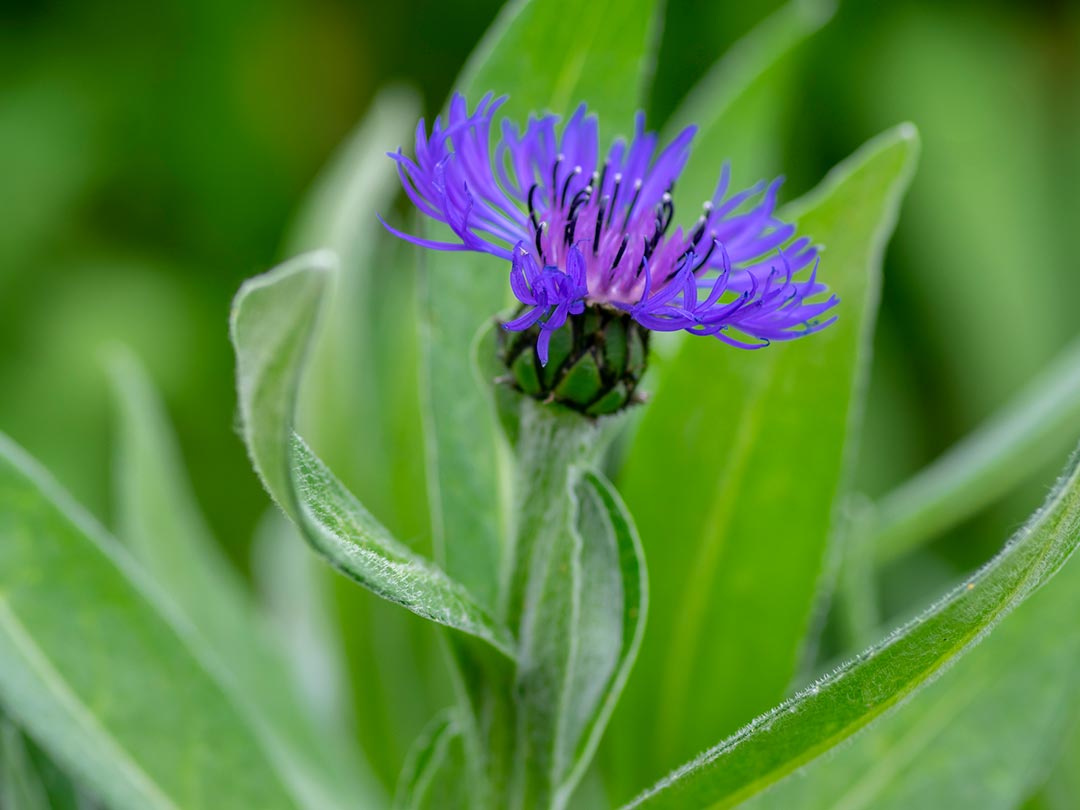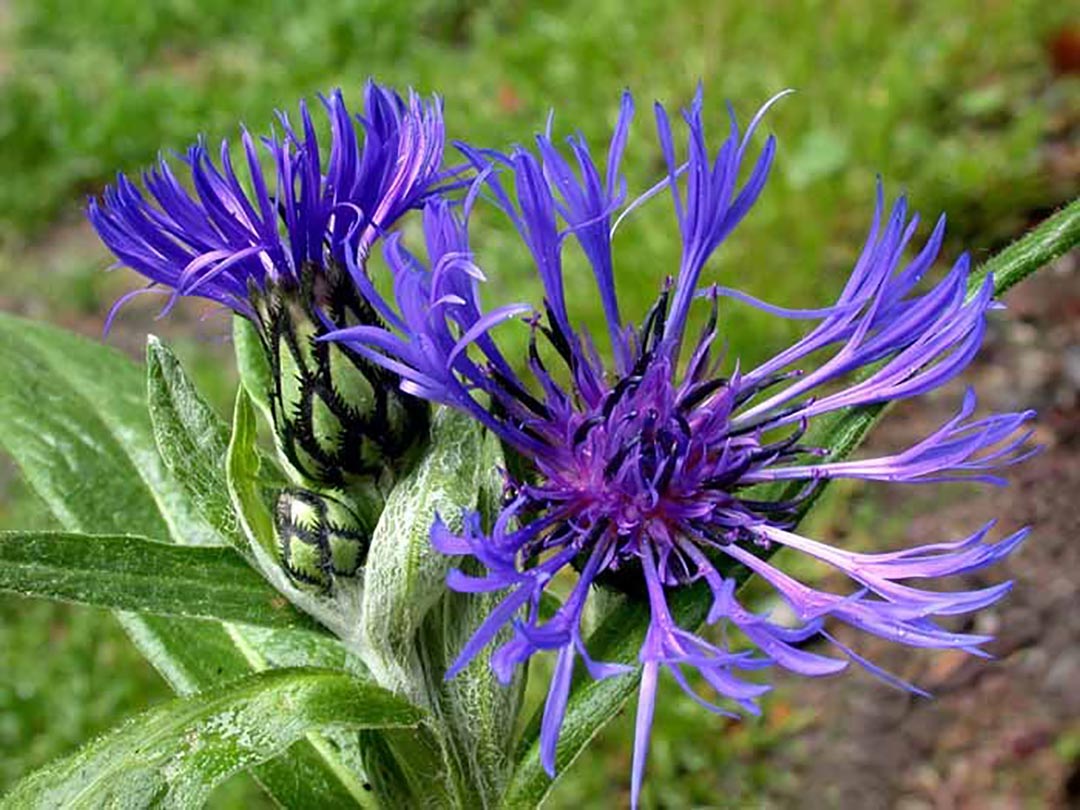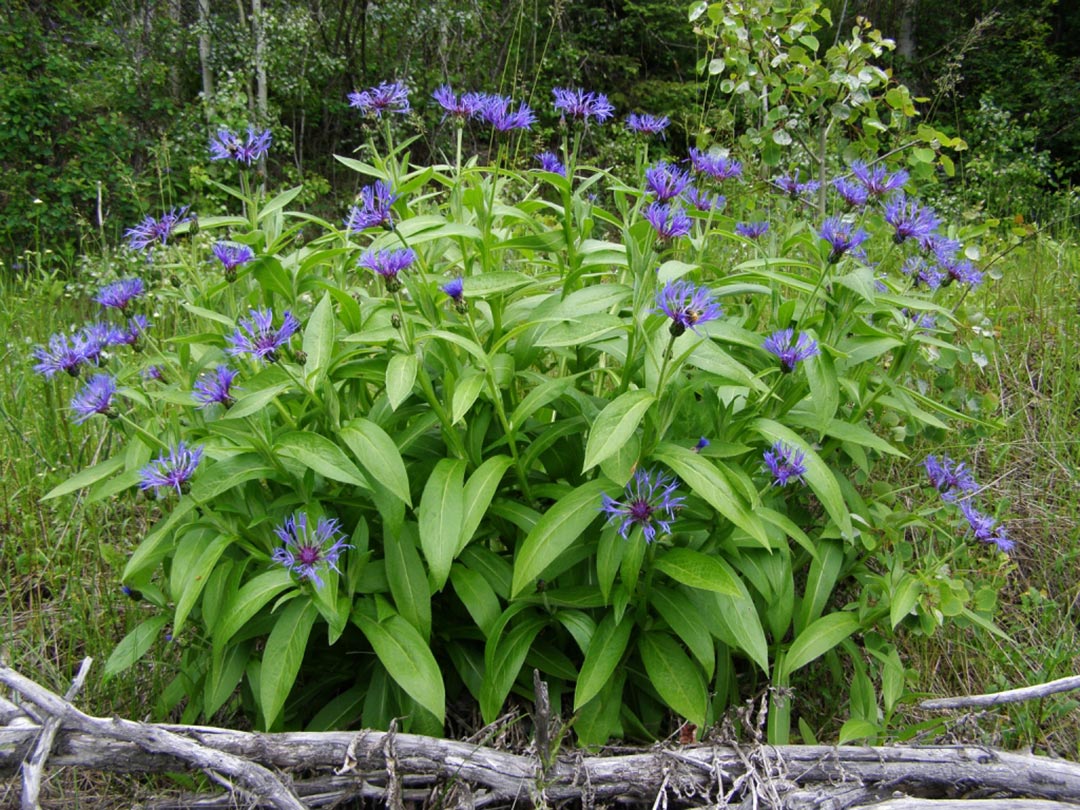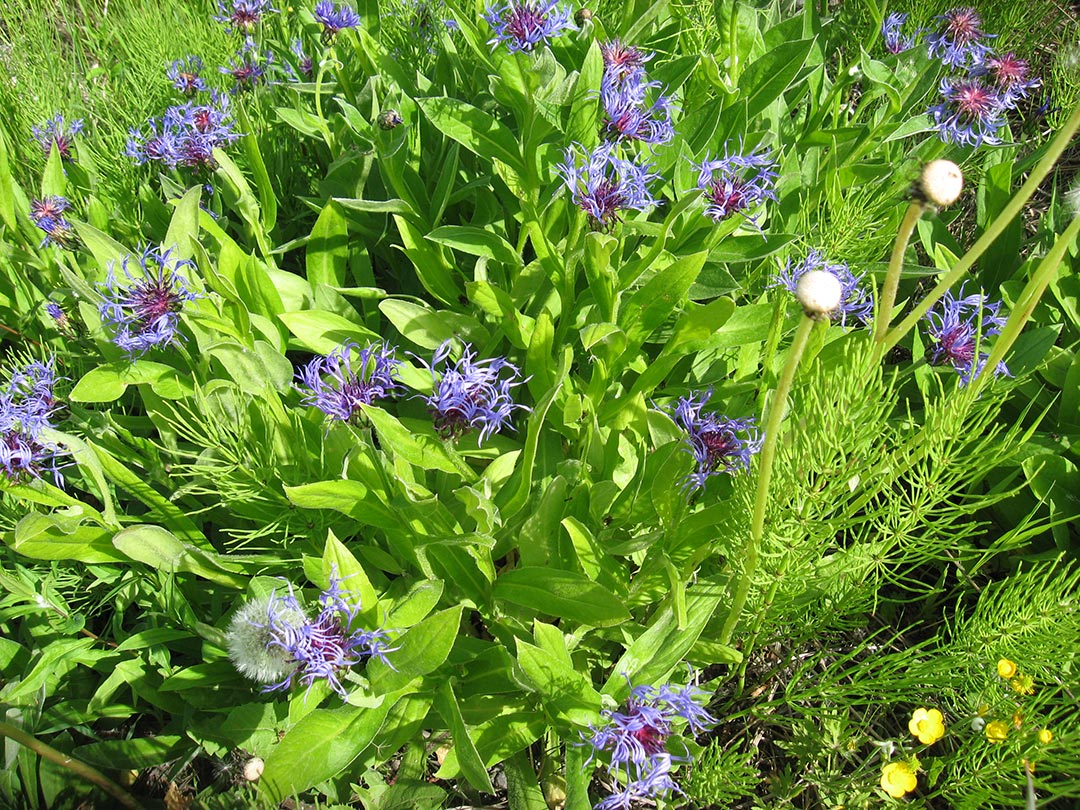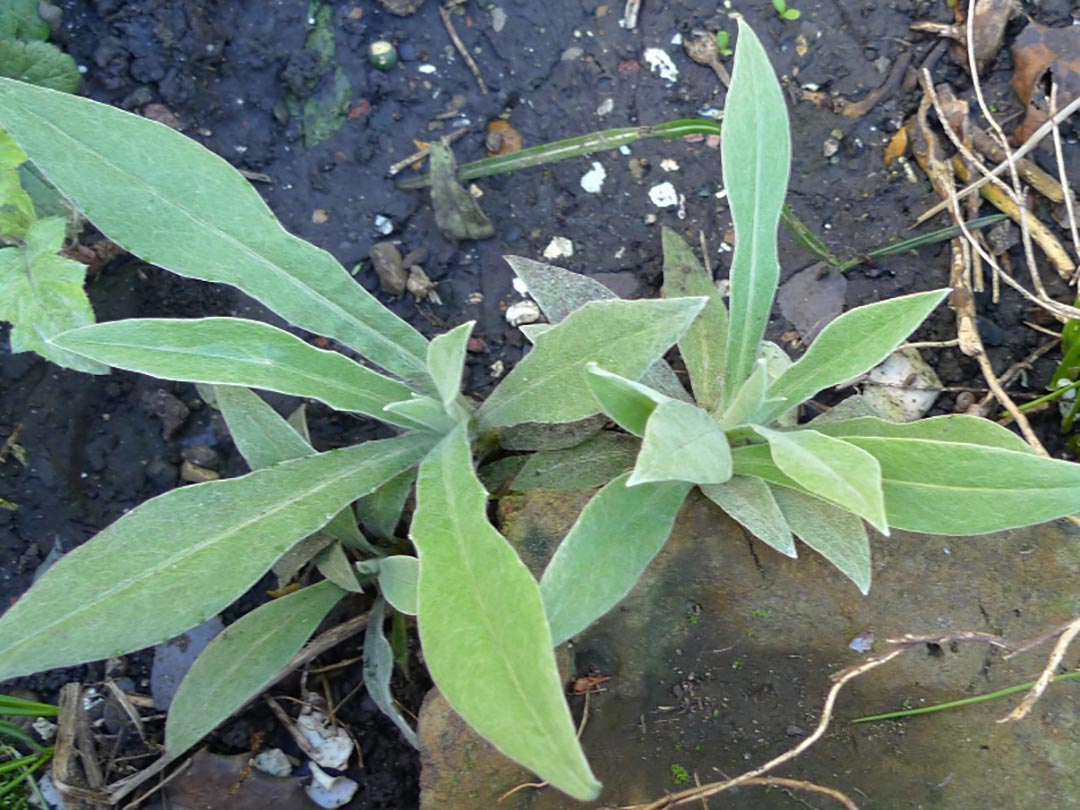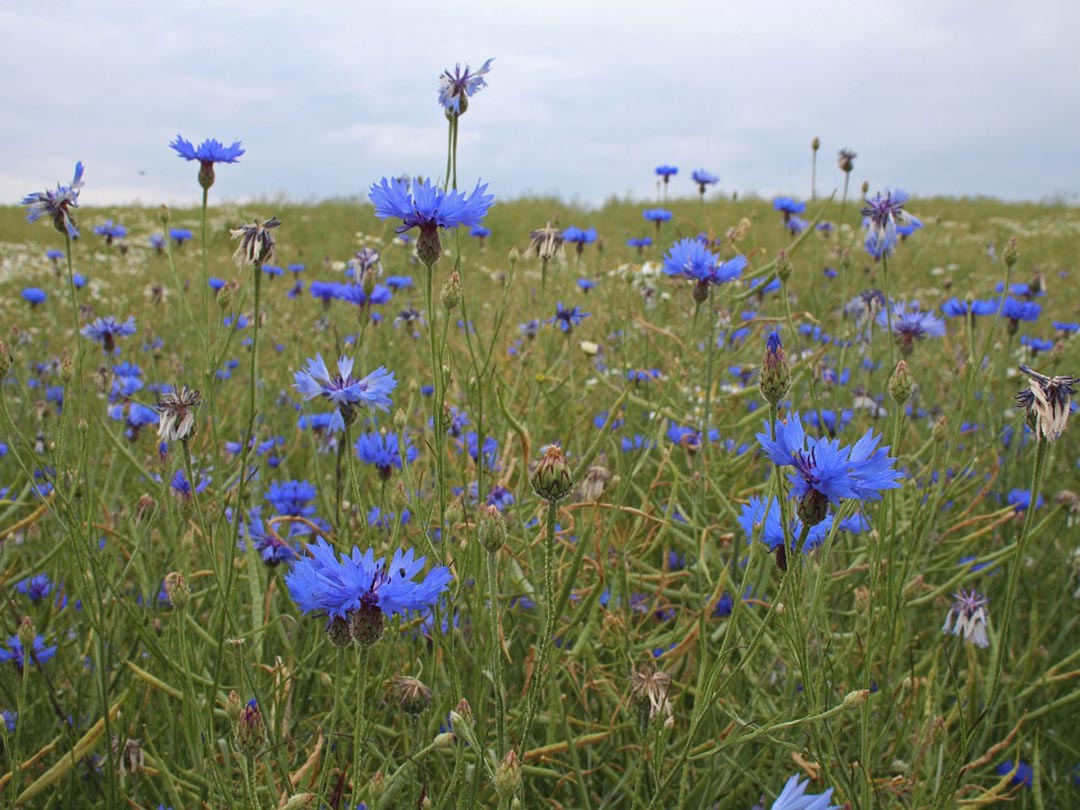Invasive Plant Details
Back to Full ListMountain Bluet
Latin Name: Centaurea montana
Identification
Flower: Large, showy blue or purple, thistle-like flower heads that bloom from late spring to midsummer.
Leaves: Narrow, lance-shaped, and slightly hairy, with a grey-green colour.
Stems: Erect, branching, and slightly hairy, growing up to 60 cm tall.
Growing Environment: Prefers well-drained soils in meadows, gardens, and open woodlands.
Growth Habit: A perennial herb that forms dense clumps and spreads via seeds and rhizomes. It can create small, colourful patches in meadows and gardens. In situ, mountain bluet appears as a low, bushy plant with large, striking blue or purple flowers.
Impacts on Environment
Impacts: Very invasive. Mountain bluet can colonize quickly through seeds and rhizomes. It can invade agricultural pastures and decrease food sources for livestock. This species tolerates both dry and moist soils, allowing it to grow in many types of ecosystems.

